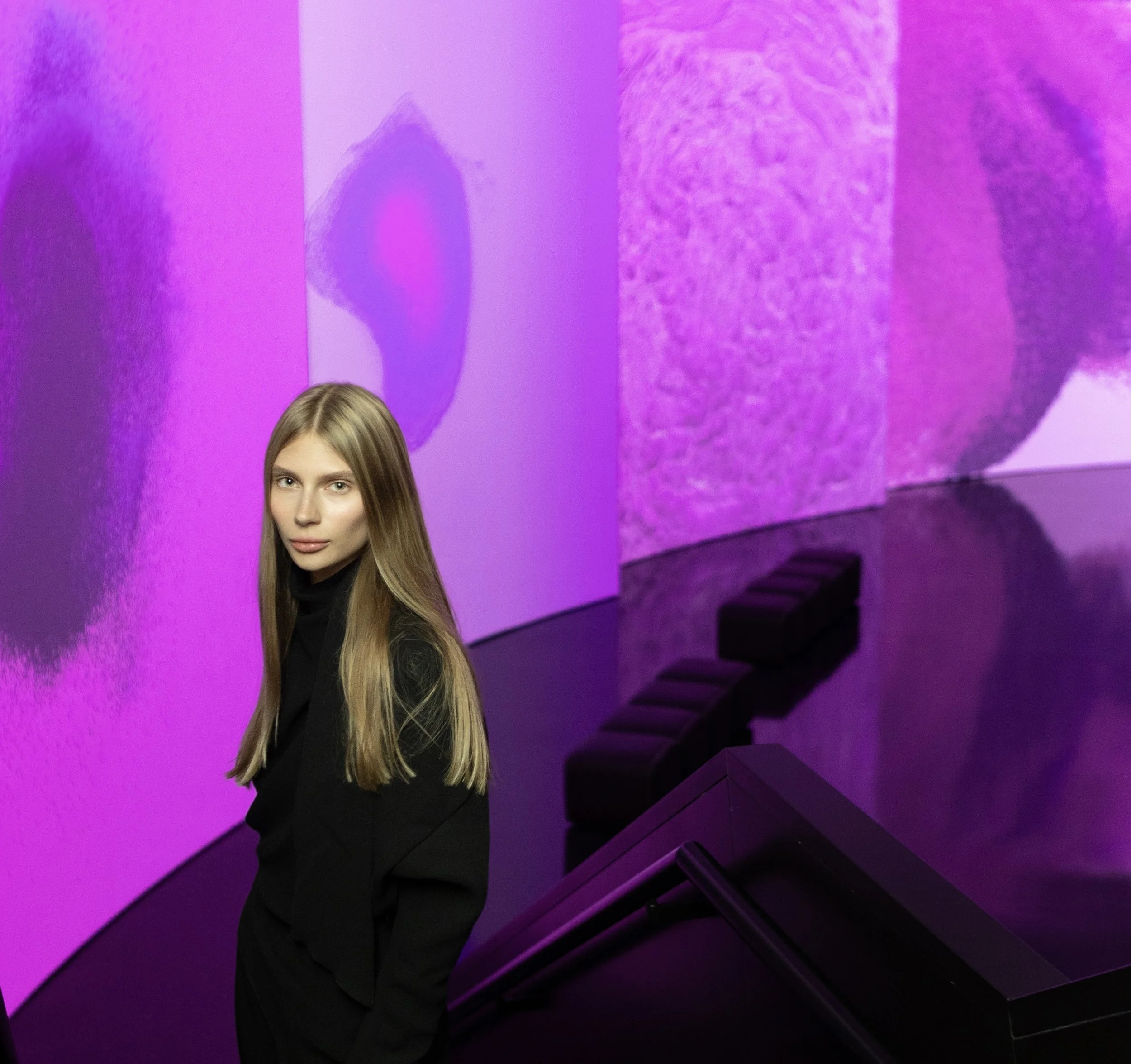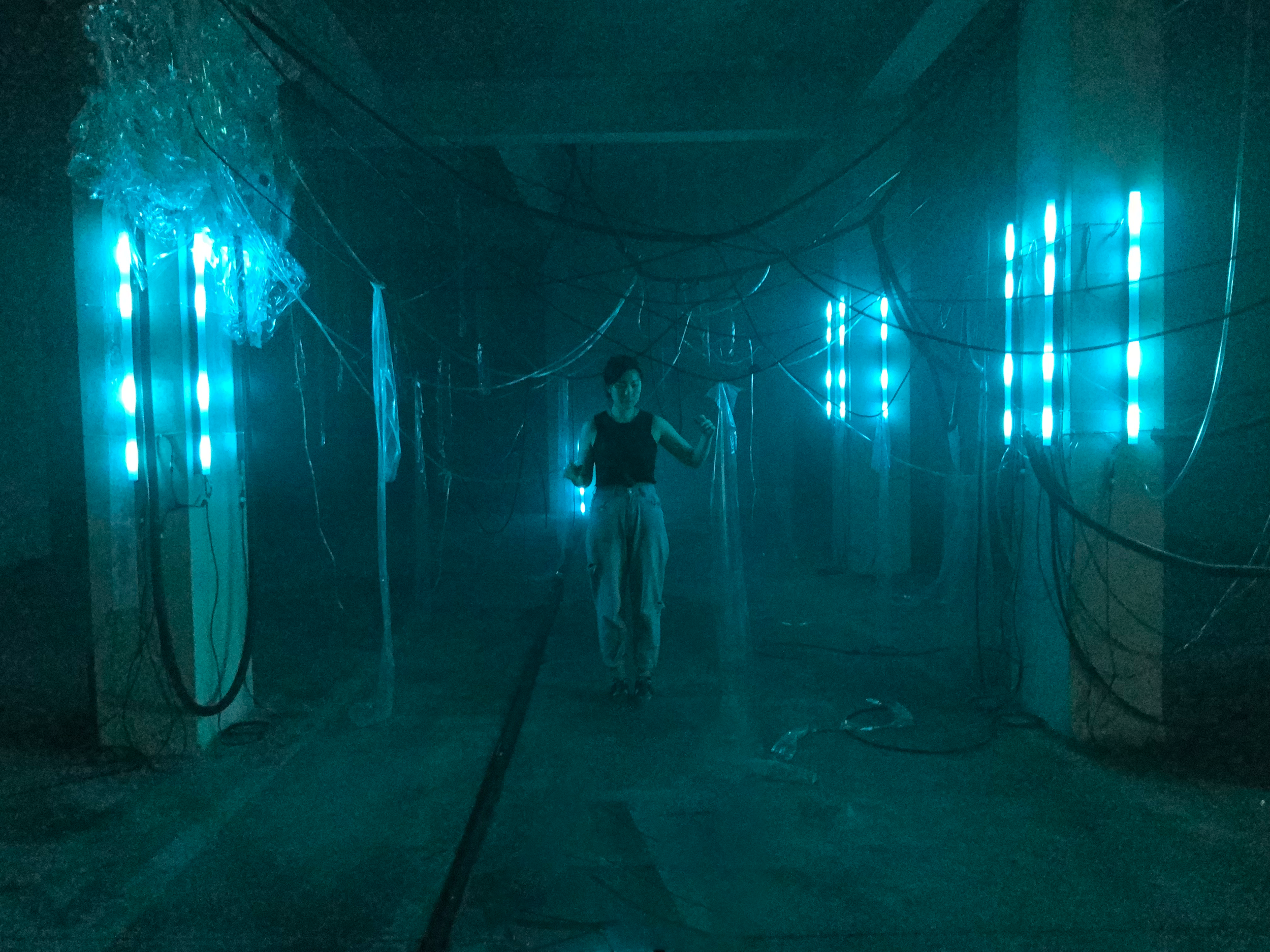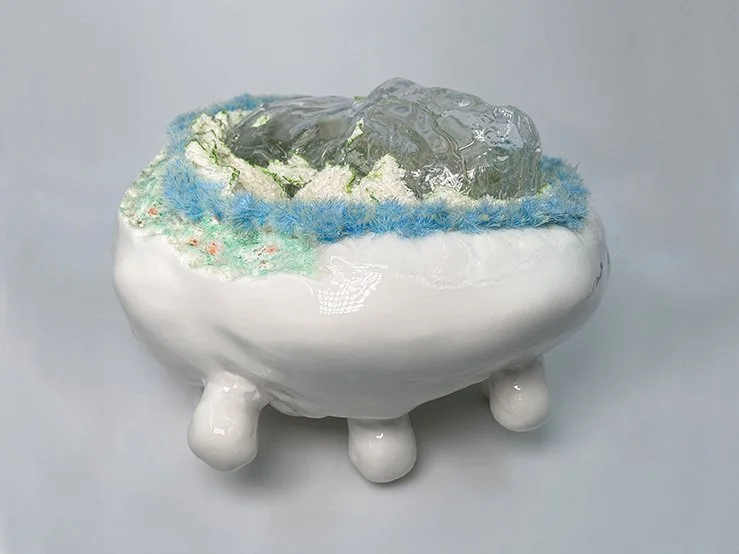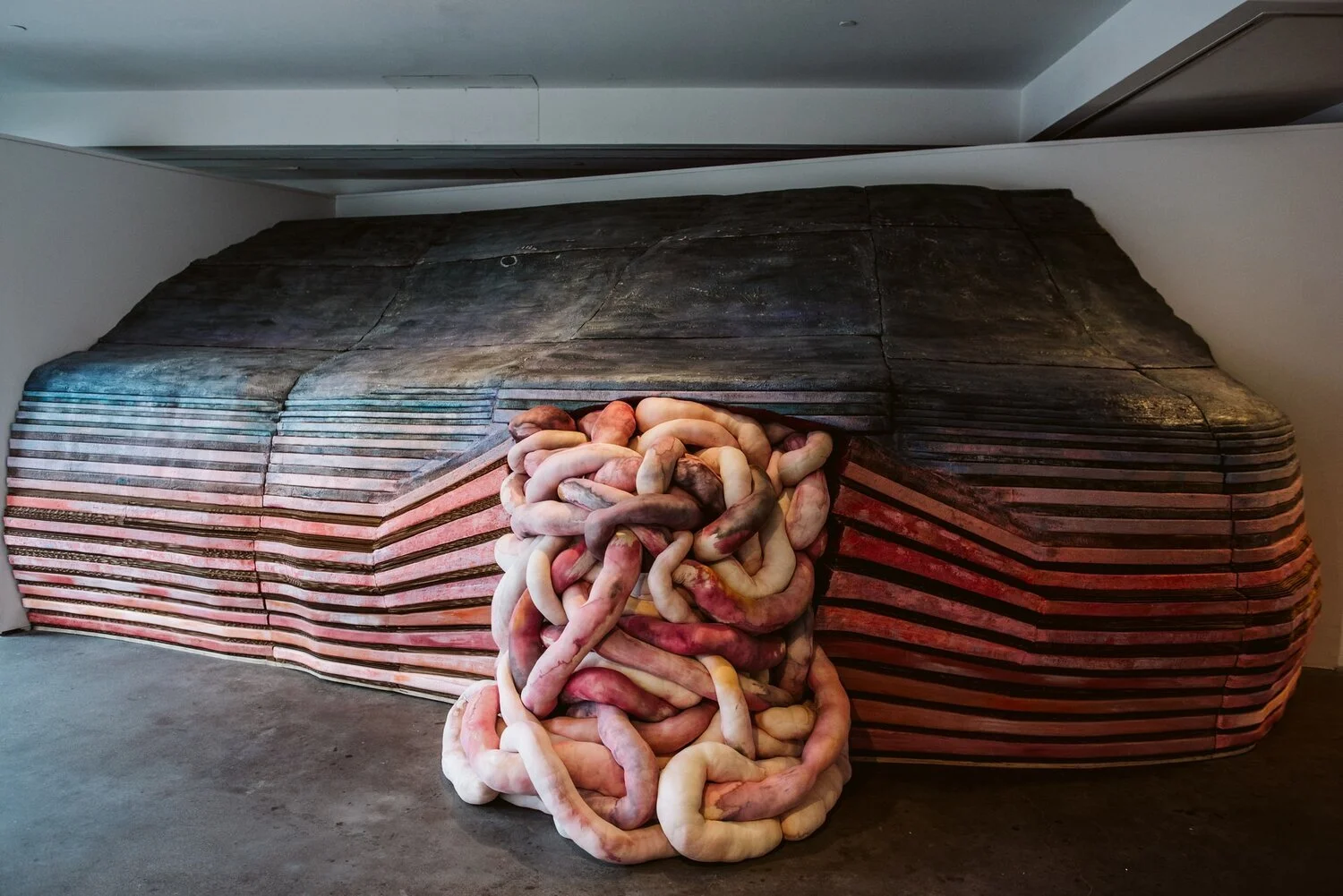10 Questions with Pavel Korbička
Al-Tiba9 Art Magazine ISSUE11 | Featured Artist
Pavel Korbička (b. Brno 1972) is a Czech artist, currently living and working in Brno. He studied with Professor Stanislav Kolíbal and Professor Miloš Šejn at the Academy of Fine Arts in Prague. In 2019 he participated in the SCOPE Light Art Residency, Berlin, and in 2020 he won the Pollock Krasner Foundation Grant (US). This year he received a Creative Scholarship from the Ministry of Culture of the Czech Republic. He had solo exhibitions at Ján Koniarek Gallery, Trnava (SK), Telegraph Gallery, Olomouc (CZ), Villa Cernigliaro, Sordevolo (IT), The Brno House of Arts, Brno (CZ), SCOPE Berlin (DE), Via Art Gallery, Prague (CZ), LAB303 - Intermediate Experimental Gallery, Katowice (PL). He also presented his works in group exhibitions such as the 2021 Biela noc - International Light Art Festival, Bratislava (SK), the Toyama International Glass Exhibition, Toyama Glass Art Museum, Toyama (JP), The Venice Glass Week, Castello Gallery, Venice (IT), Pavilion 02, GAD – Giudecca Art District, supplemental exhibition to the 58th Biennale of Contemporary Art, Venice, SIGNAL Festival - International Light Art Festival, Prague (CZ), and NordArt, Büdelsdorf (DE).
Pavel Korbička - Portrait
ARTIST STATEMENT
Pavel Korbička exploits each creative impulse down to the minutest detail and is able to bring his message across with the use of the most economical devices, his idiom conveying an experience of great intensity. He works with space, light, and color, employing various combinations of new and classical technologies. He manages to conjure up a state of suspense between objects and installations. Whether he displays them indoors or outdoors is of no relevance. While his sculptures may superficially appear static, they actually attest to a great deal of importance assigned by the artist to the element of motion. Motion, that is, does not involve the objects themselves but rather concerns the viewers circling or entering them. With every new step, correlations between light and color transform. Thus, the artist's message acquires new dynamism, as the viewers perceive the composition as a whole in a different and sometimes quite unexpected way with each change of perspective or color.
The Horizons of Light, neons, 1 cm x 195 cm, 2019, Artikle Gallery in Brno (CZ), photo: Kubicek.studio © Pavel Korbička
INTERVIEW
Welcome back to Al-Tiba9, Pavel. What have you been doing since the last time you were published in our magazine?
Well, lots of things, actually. But before that, I had found that it was wrong to succumb to the hysteria associated with the Covid-19 pandemic, and while it was important to be cautious and follow increased public health rules, the most important thing of all was to just keep on working and retain a bit of that creative freedom in my head. Travel was limited for a long time, but I ultimately managed to exhibit in Venice, Italy, Toyama, Japan, Trnava, Slovakia, and in the Telegraph Gallery back home in the Czech Republic, and even publish my catalog at SCOPE in Berlin. But what I appreciate most is what was achieved in Villa Cernigliaro in Sordevolo at the foot of the Italian Alps. This amazing historical place was an important center of the anti-fascist resistance in Italy during the Second World War. I had a great time. My professor from the academy, the prominent Czech sculptor Stanislav Kolíbal, always used to say that "a person will endure a lot if he does not take off the load he carries on his shoulders..." And in art, this is doubly true because the work we do can't keep us from living life.
Have you introduced anything new in your practice over the past couple of years?
Not so much introducing as implementing. I began to understand more deeply the important aspects that my work touches on or contains. Maybe there was suddenly more time for that during the pandemic. I'm not sure. But I think that's the most important thing. The greatest transformations occur from within when they are not yet visible.
Vertical No.3, site-specific installation, neons, length: 1200 cm, 2012, former Monastery Rosa Coeli in Dolní Kounice (CZ), photo: Jan Vermouzek © Pavel Korbička
Your art closely relates to the viewers and how they interact with the pieces. Did the global pandemic and lockdowns impact your way of working and displaying your work?
I don't know if it is a matter of direct influence, but I do construct my current physically passable labyrinthine corridors in such a way that visitors do not physically meet in them. Encounters are possible in the optical plane, where reality is revealed or dissolved in layers of linear light plans. In the times we live, we naturally encounter numerous aspects, but we only incorporate some of them into our work. The key to their even subconscious choice is usually the current context in which we move and within which we act as a kind of filter. The period is imprinted on the work without us even having to try.
Do you think the pandemic will have a long-lasting impact on your production?
The pandemic has mainly changed one's perspective of perception, which in this respect can eventually have a positive effect because, within the framework of a long resolved artistic problem, it can lead to its understanding just by deflecting the angle from which we view the same thing. In the long term, this change can cause the transformation of entire forms. But it's still too early, I think. I now consider the Russian invasion of Ukraine a greater global threat. It can cause world poverty, in which not only art suffers. But I would like to be wrong.
Light and movement are still at the center of your practice. Did you discover any new medium or technique or incorporate other art forms in your practice?
I deal with site-specific installations based on a specific spatial situation in which light and movement play an important role in discovering the hidden orders in this space. I offer viewers a light space into which they can enter and activate certain circular light phenomena with their movement, which occur together until they exit the installation. Viewers perceive these light phenomena differently with each eye, and any one-hundredth change in the angle of view dynamically changes their appearance. We generally perceive space through binocular or stereoscopic vision comprised of the right and left eyes. The point of convergence of these two views occurs at the so-called reference point. However, the curved space of my installations with specific lighting conditions somehow disrupts this naturalness and makes it impossible to find this reference point. This often becomes a moment of uncertainty for viewers, in which, for example, they may lose their balance or become otherwise disoriented. But the longer I work on these installations, the more I am interested in optics or psychology rather than in art itself.
Space of Perception, site-specific installation, polycarbonates, neons, 210x2144x1569 cm, 2021, Telegraph Gallery in Olomouc (CZ), photo: Jan Vermouzek © Pavel Korbička
Light Perspectives, site-specific installation, polycarbonates, neons, 210x1669x755cm, 2022, Ján Koniarek Gallery in Trnava (SK), photo: Filip Krutek © Pavel Korbička
What about the core themes of your work? Is there anything that has caught your attention recently and you would like to incorporate into your work?
I am still basically doing the same thing. If you persist in the same problem for a while, you will suddenly begin to understand it, and you can develop it better. I defined my theme as "space – body – dialog". While space is a given that needs to be carefully analyzed, the body is a subject that perceives space proportionally to itself. Dialog is the result of the findings of previous analyses and experiences. To get by in some space, you must understand it and create an analysis of the relationships contained in it, which are not even recognizable at first glance. As corporeal beings, we perceive and experience space, which is rediscovered through our bodies. Through it, mental constructs take on a new meaning with each new experience. A spatial dialog then unfolds between space and the perceiving subject, based on the principle of interaction, which can influence, for example, the viewer's motor skills. Having said that, I would certainly still like to return to spatial sound projects at some point. But for a project that is developing in my head, I will have to create a whole team of experts from multiple fields.
Now that the world is gradually reopening, what are your plans for the upcoming months? Do you have any exhibition or project you are about to launch?
Yes, waking up from a pandemic is riveting. Many new opportunities have appeared, and long-delayed exhibition projects are starting to be implemented. Unfortunately, we immediately woke up to a new threat in the form of war in Ukraine. It is as if we inhaled something toxic just after being able to breathe freely again. Despite this bitterness, I continue to work intensively. For example, I am advancing a series of optical reliefs called "Horizons of Light" into the form of closed patterns, whose color articulation is the result of an invisible internal structure. I also have many ongoing exhibition projects, and I'm still waiting on official confirmation regarding the dates. This is also one of the features that the pandemic brought with it. But there should definitely be the September international exhibition with the theme of light at the Kunsthalle in Hanover, the permanent light realization on the façade of the Ján Koniark Gallery in Trnava, Slovakia, and the publication and launch of my Italian catalog, on which I cooperate with the Italian curator of Czech origin, Miroslava Hajek. Other, mostly site-specific projects, for which the Lisbon curator Mário Caeiro approached me, could take place in three Portuguese sacral spaces: Batalza, Obidos, and Torrão.
Dance calligraphy no.E2 – 00:02:52 min, installation, neons, 209x133x139 cm, 2017, dance: Petra Hauerová, installation in The Brno Haus of Arts (CZ), photo: Jan Vermouzek © Pavel Korbička
What do you think of the recent changes in the art world? Do you consider getting into digital art and the Metaverse as many artists do today?
I don't think the main changes are visible yet. They are already happening, but so far, on a different level. I have never really enjoyed the superficial introduction of current topics into art. But I certainly do not question a number of important works of art that have been created in this way and will stand the test of time in art history. Art has undergone major changes within digital technologies. I have been using digital technologies since about 2010 for 3D scanning of dance movement, the data of which is then processed for 3D printing, with the resulting 3D prints serving as a matrix for shaping glass neon tubes. I have been trying to record dance spatially since 1996 when various touch or photographic drawings with long exposure were created. But only the development of 3D technologies enabled me to achieve an accurate spatial recording of motion. However, I still only use digital technologies as one of the possible tools to implement complicated spatial concepts, so I don't work with them as the ultimate art form. I was also interested in virtual reality, but so far, I am still repelled by something about it. This is the case despite the fact that, in many ways, it may relate to what is happening in my labyrinthine corridors. I perceive them as a kind of optical illusion, which we can see from the real height of our figure, but our own body does not seem to exist there otherwise. I don't see myself, and when I should bump into something, I go through it. But maybe I'm wrong, and there are already more perfect virtual environments. Currently, thanks to a creative scholarship from the Ministry of Culture of the Czech Republic, I am implementing one of the new movement projects, in which I also involved the Italian performer and dancer Silvia Morandi. The resulting installation will be on display in Berlin next year.
Metaphors I, site-specific installation, neons, trees, alpine mountains, length: 1200 cm, 2021, Villa Cernigliaro Park in Sordevolo (IT), photo: archive of the author © Pavel Korbička
You have exhibited extensively and worked on several different projects. Is there still one thing or one place you still dream of achieving?
So I would definitely like to do something in the future in New York City, exhibit at the Centre for International Light Art in Unna, or maybe take part in an exhibition on the light in the Museum of Modern Art of Algiers. The König Gallery in Berlin is also an amazing space. But I would also like to visit Roden Crater in Arizona and meet James Turrell in person there.
Lastly, given your experience, what is one piece of advice you would give to an emerging artist?
To be tolerant and respect freedom of expression.

























